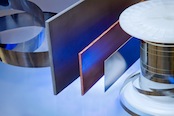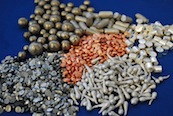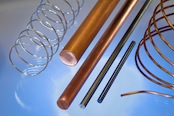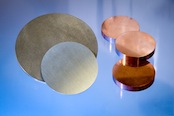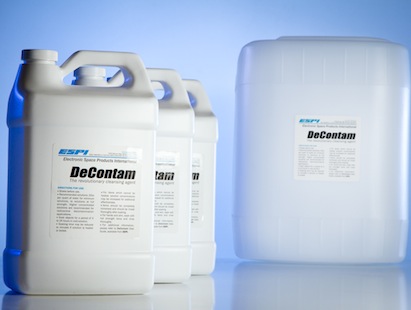Diammineplatinum Nitrite
MATERIAL SAFETY DATA SHEET
I. PRODUCT IDENTIFICATION
Manufacturer/Supplier:
ESPI Metals
1050 Benson Way, Ashland, OR 97520
Toll Free (800) 638-2581 * Fax (541) 488-8313
E-Mail: This email address is being protected from spambots. You need JavaScript enabled to view it.
Product Name: Diammineplatinum (II) Nitrite
Formula: Pt(NH3)2(N02)2
CAS Number: 14286-02-3
II. HAZARDOUS INGREDIENTS
Hazardous Components: Diammineplatinum (II) Nitrite
Percent (%): 0-100
OSHA/PEL: 0.002 mg(Pt)/m3
ACGIH/TLV: 1.0 mg(Pt)/m3
III. PHYSICAL DATA
Boiling Point: Decomposes
Melting Point: N/A
Specific Gravity: N/E
Solubility in H2O: Slightly soluble
Appearance and Odor: Yellow-Green crystalline powder.
IV. FIRE AND EXPLOSION HAZARDS DATA
Flash Point: N/A
Autoignition Temperature: N/A
Flammable Limits: Lower: N/A Upper: N/A
Extinguishing Media: Use suitable extinguishing media for surrounding material and type of fire.
Special Firefighting Procedures: Firefighters must wear full face, self-contained breathing apparatus with full protective clothing to prevent contact with skin and eyes.
Unusual Fire and Explosion Hazards: May emit toxic fumes upon decomposition.
V. HEALTH HAZARD INFORMATION
Effects of Exposure:
To the best of our knowledge the physical, chemical and toxicological properties of diammineplatinum nitrite have not been thoroughly investigated and recorded.
Platinum-containing dusts or fumes may cause irritation, sensitization reactions and asthma. Effects include sneezing, coughing, tightness in the chest, dyspnea and wheezing. Cyanosis is possible. Chronic exposure may result in pulmonary fibrosis.
Acute Effects:
Inhalation: May cause irritation to the mucous membranes and respiratory tract.
Ingestion: Danger - Poison by ingestion. May cause human systemic effects.
Skin: May cause irritation.
Eye: May cause irritation.
Chronic Effects:
Inhalation: May cause wheezing, dyspnea, cyanosis, lymphocytosis, and slight lesions in the lungs.
Ingestion: No chronic health effects recorded.
Skin: May cause dermatitis and sensitization.
Eye: No chronic health effects recorded.
Carcinogenicity: NTP? No IARC Monographs? No OSHA Regulated: No
EMERGENCY AND FIRST AID PROCEDURES:
INHALATION: Remove to fresh air. Keep victim warm and quiet, give oxygen if breathing is difficult. Seek medical attention.
INGESTION: Give 1-2 glasses of milk or water, DO NOT induce vomiting, seek immediate medical attention. Never give anything by mouth to an unconscious person.
SKIN: Remove any contaminated clothing, brush material off of skin, flush with running water, wash carefully with soap and water. Seek medical attention.
EYES: Flush with copious amounts of water for at least 15 minutes, lifting both upper and lower eyelids. Seek medical attention immediately.
VI. REACTIVITY DATA
Stability: Stable
Conditions to Avoid: Extreme heat
Incompatibility (Material to Avoid): Reducing agents, oxidizers, metal powers, organic solvents.
Hazardous Decomposition Products: NOx, NH3
Hazardous Polymerization: Will not occur
VII. SPILL OR LEAK PROCEDURES
Steps to Be Taken in Case Material Is Released or Spilled: Wear appropriate respiratory and protective equipment specified in Section VIII. Isolate spill area and provide ventilation. Scoop or vacuum up spill using a high efficiency particulate absolute (HEPA) air filter and place in a closed container for proper disposal. Take care not to raise dust.
Waste Disposal Method: Ship to precious metal refiner. Dispose of in accordance with State, Federal and Local regulations.
VIII. SPECIAL PROTECTION INFORMATION
Respiratory Protection: NIOSH/MSHA approved dust-mist-vapor respirator
Ventilation: Handle in a controlled atmosphere. Use local exhaust to maintain low exposure levels. General exhaust is not recommended.
Protective gloves: Impervious gloves
Eye Protection: Safety goggles
Other Protective Clothing or Equipment: Protective gear suitable to prevent contamination.
IX. SPECIAL PRECAUTIONS
Precautions to Be Taken in Handling and Storage: Keep tightly sealed when not in use. Store in a cool, dry place. Read MSDS before using. Wash thoroughly after handling.
Work Practices: Implement engineering and work practice controls to reduce and maintain concentration of exposure at low levels. Use good housekeeping and sanitation practices. Do not use tobacco or food in work area. Wash thoroughly before eating and smoking. Do not blow dust off clothing or skin with compressed air. Maintain eyewash capable of sustained flushing, safety drench shower and facilities for washing.
TSCA Listed: Yes
DOT Regulations:
Hazard Class: None
The above information is believed to be correct, but does not purport to be all inclusive and shall be used only as a guide. ESPI shall not be held liable for any damage resulting from handling or from contact with the above product.
Issued by: S. Dierks
Revised/Verified: September 2008

 ALLOYS
ALLOYS 
